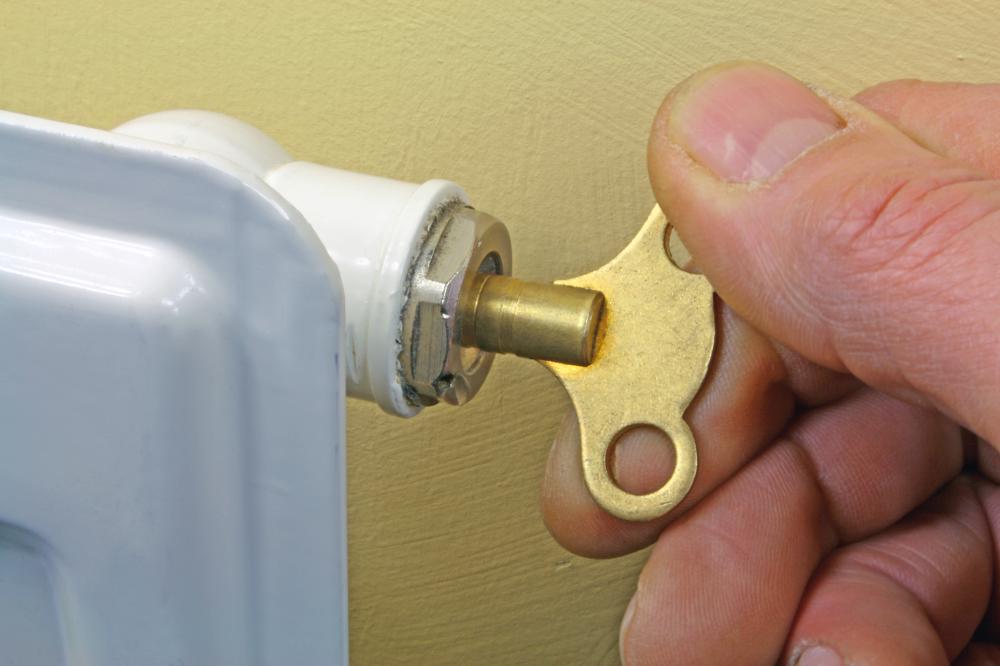At WiseGEEK, we're committed to delivering accurate, trustworthy information. Our expert-authored content is rigorously fact-checked and sourced from credible authorities. Discover how we uphold the highest standards in providing you with reliable knowledge.
What is a Baseboard Radiator?
Baseboard radiators are commonly confused with baseboard heaters, because they resemble each other and are installed along the baseboard area of a wall. A baseboard heater uses electricity to generate heat, but a baseboard radiator produces heat through a hydronic heater system, sometimes known as a hot water baseboard system. A modern, space-saving conception of the cast iron radiator, hydronic baseboard heaters provide gentle, energy-efficient heat. A typical baseboard radiator is about 8 inches (20 cm) high and is manufactured in standard lengths of 2-8 feet (.6-2.44 m).
With the development of central heating and the advances of modern mass production, cast iron radiators were a common feature in 19th century homes. After World War II, a smaller, more compact version was sought, and the hydronic baseboard heater was born. The newer baseboard radiator units operate much like their forebears: a boiler pumps hot water mixed with propylene glycol through a circuit of pipes. Pipes run through the baseboard radiator, which radiates heat throughout the room. The water mixture flows through the closed loop series of pipes, then return to the boiler, where the fluid is reheated and redistributed.

The hydronic baseboard heater system is very attractive and practical because of its extreme versatility and energy efficiency. The boiler can run on oil, natural gas, wood, pellets and even solar energy. Traditionally, the pipes in the hydronic system have been copper, but modern installations make use of polyethylene crosslink, a durable plastic product that is available at a fraction of the cost of copper. Some hydronic baseboard radiator systems allow homeowners to cool their homes by pumping cool water throughout the system.
Although cast iron radiators were decorative and sometimes ornate, the baseboard radiator is generally utilitarian and simple. Unlike electric baseboard heaters, there is no risk of fire if furniture or curtains are too close to the units. Baseboard hydronic heaters do have their caveats, however. A leak in the system can wreak havoc on walls and flooring. Air in the system can be quite noisy, although the baseboard radiators do have valves that allow air to be bled from them.
AS FEATURED ON:
AS FEATURED ON:











Discuss this Article
Post your comments